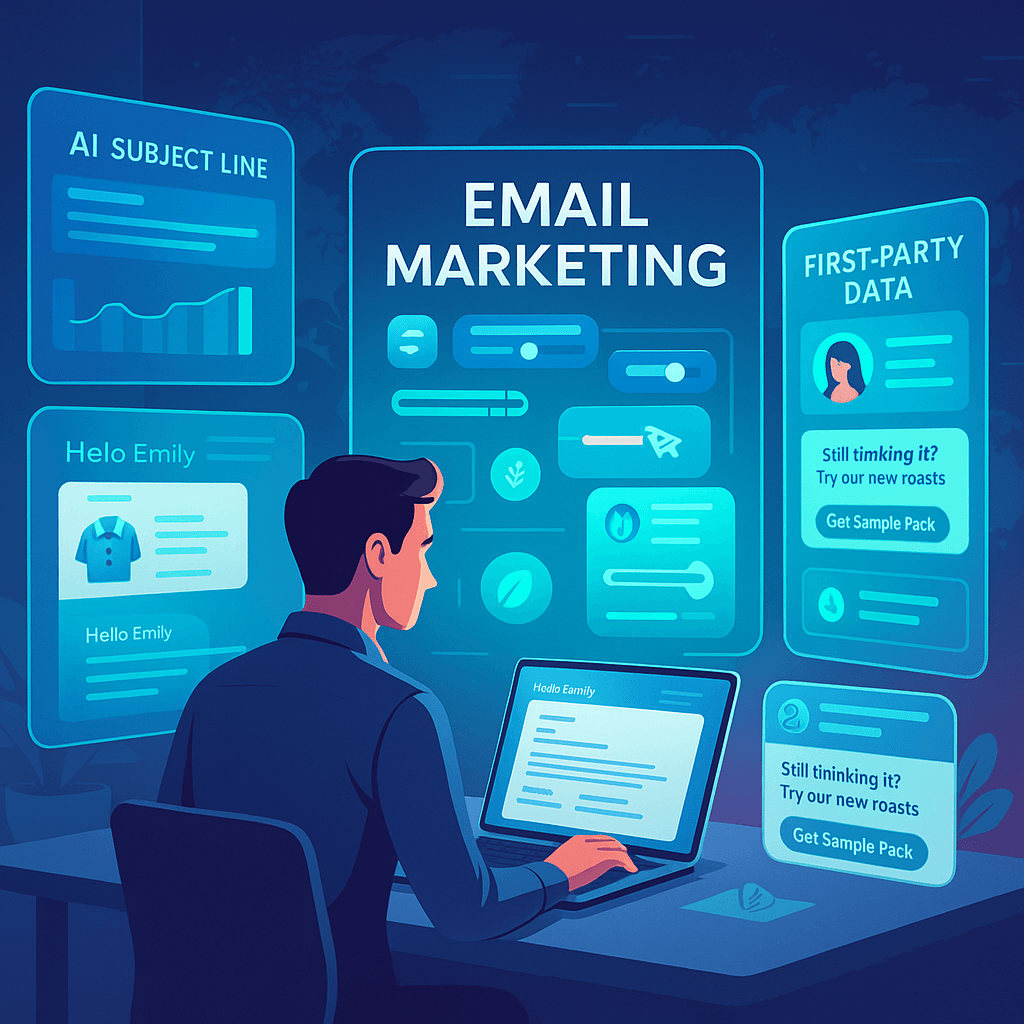I’ve spent the last decade watching digital marketing evolve at breakneck speed. What worked last year might already be outdated today. After helping dozens of clients transform their online presence, I’ve distilled what actually moves the needle into this guide. No fluff, just practical strategies I’ve personally seen deliver results.
1. Data-Driven Email Marketing Campaigns
Let me tell you about Sarah, a local boutique owner I worked with last summer. She was skeptical about email marketing, having tried generic newsletters that flopped. We completely revamped her approach by diving into her customer purchase data.
“I never realized how much information we already had,” she told me after we segmented her list into distinct buyer personas.
Her open rates jumped from a measly 12% to over 37% by simply sending different content to different customer types. The magic happened when we created these personalized journeys:
For new subscribers: A welcome series sharing her founding story and values before any hard selling For regular customers: Early access to new collections with personalized recommendations For dormant customers: Special “we miss you” campaigns with exclusive offers
The real game-changer was implementing Modern Email Marketing Strategies like interactive polls in her emails asking customers about their preferences. One customer replied: “It feels like you’re actually listening to what I want!”
Best Practices for 2025 I’m implementing with clients now focus on creating emotional connections. Sarah now includes behind-the-scenes videos of her team selecting materials, which consistently outperform standard product announcements.
I’ve seen too many brands get caught up in automation while forgetting the human touch. Sarah writes portions of her emails personally, and customers notice the difference.
2. Strategic Content Marketing that Builds Authority
I remember when Tom, a financial advisor, complained that his blog was “a waste of time” despite publishing weekly. The problem? He was writing what HE thought clients wanted, not what they were actually searching for.
We spent an afternoon talking to his top clients, uncovering their real financial concerns. Turns out, they weren’t looking for investment tips but worried about funding their kids’ education while saving for retirement.
His breakthrough piece—”How I Helped a Family Save for College Without Sacrificing Retirement”—generated more leads than his previous 20 posts combined. Why? It addressed a specific pain point with a real story.
For content marketing that works, I always tell clients:
- Share your personal experiences solving specific problems
- Include actual conversations with customers (anonymized if needed)
- Take a stand on industry issues instead of playing it safe
- Document your learning process, including mistakes
Tom’s monthly case studies now feature real clients (with permission) and detail the exact strategies he implemented. His content feels authentic because it is.
3. Targeted Paid Advertising with Measurable Returns
I wasted thousands on my first advertising campaigns. The targeting was too broad, and I had no clear conversion path. Now I follow a simple rule: never start an ad campaign without knowing exactly how success will be measured.
Last month, I helped a local gym owner who was frustrated with generic fitness ads that brought in tire-kickers. We created separate campaigns for distinct audiences:
- Parents seeking kids’ programs (targeted during school hours)
- Corporate professionals (ads shown during commute times)
- Fitness enthusiasts (focusing on specialized equipment)
Each ad directed people to different landing pages with testimonials from similar members. His cost per acquisition dropped by 43%.
The secret? We constantly refined the audiences based on who actually converted. As he told me, “I finally feel like I’m talking to real people, not just throwing money at clicks.”
4. Omnichannel Marketing Approach
Maria runs a small catering business and was struggling to maintain consistent messaging across platforms. Customers would see elegant branding on Instagram but then receive plain-text emails that felt disconnected.
We created what I call a “customer journey map” on her office wall—literally tracing every touchpoint customers have with her brand. This visual reminder helped her team maintain consistency.
Now, when someone requests information through Instagram, they receive a beautifully designed PDF brochure via email, followed by a text reminder about an upcoming tasting event. The booking rate increased by 28% in just two months.
“Customers actually mention how seamless everything feels,” Maria told me last week. “One client said it was like having a conversation with one person across different channels.”
5. Social Media Marketing with Community Building
I’ve watched too many brands chase followers instead of building relationships. My client Rebecca, who sells handcrafted jewelry, completely transformed her approach after a frustrating year of low engagement.
Instead of posting product photos daily, she started sharing her creative process through raw, unfiltered stories—her inspiration, failures, and workshop disasters. Her engagement tripled.
The breakthrough came when she started a weekly live session called “Design With Me,” where followers suggested elements for new pieces. These collaboratively designed items consistently sell out within hours of release.
“I never expected customers would care so much about being part of the creation process,” she told me. Now she has a dedicated community of fans who defend her brand and recommend her to friends.
6. Search Engine Optimization with Technical Excellence
Let me be honest: SEO is hard work, and there are no shortcuts. When Jason’s outdoor gear site was buried on page seven of search results, we took a patient, methodical approach.
We interviewed actual hikers at local trails about their gear challenges and created in-depth guides addressing these specific issues. His comprehensive tent comparison guide—with videos of him setting up each model in rainy conditions—now ranks first for several valuable keywords.
“I thought SEO was all technical mumbo-jumbo,” Jason admitted, “but it’s really about answering questions better than anyone else.”
The technical aspects matter too. When we improved his mobile page load speed from 6.2 seconds to 1.8 seconds, his bounce rate dropped by 34%. Real people don’t wait for slow sites.
7. Conversion Rate Optimization Through Continuous Testing
I learned this lesson the hard way with my own business. For months, I couldn’t figure out why so many potential clients abandoned my consultation booking form. The solution came from watching my mother try to use it.
“Why is this asking for my company size before I even know your prices?” she asked. That simple question led to a complete redesign, focusing on answering client questions before asking for information.
Similarly, when working with an online retailer, we discovered that moving customer reviews above the product description (rather than below) increased conversions by 23%. These small changes compound dramatically over time.
Conclusion
Digital marketing isn’t about tricks or hacks—it’s about understanding real people and creating genuine connections across channels. The strategies I’ve shared work because they focus on solving actual customer problems through email marketing, thoughtful content marketing, and strategic advertising.
I’ve seen businesses transform when they stop chasing algorithms and start focusing on human experiences. The brands that thrive don’t necessarily have the biggest budgets, but they consistently show up with relevance, value, and authenticity.
What digital marketing challenge is your business facing right now? I’d love to hear your experiences in the comments below.





